Zhengrong Liang
Lesion classification by model-based feature extraction: A differential affine invariant model of soft tissue elasticity
May 27, 2022
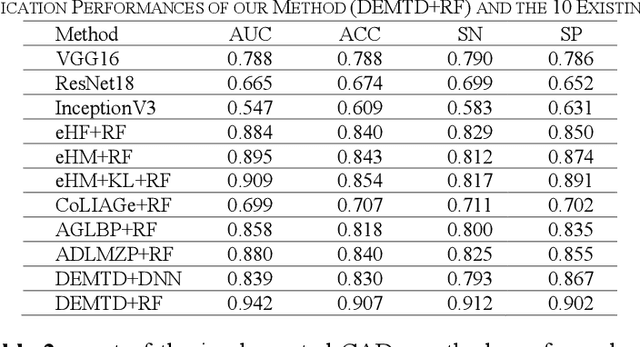
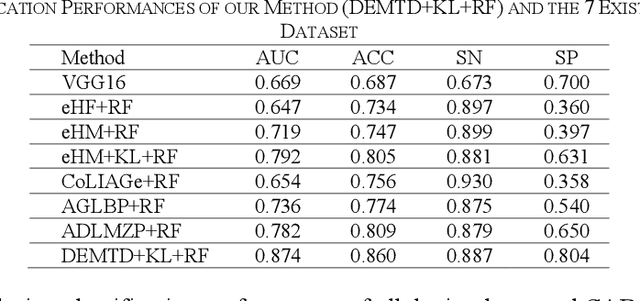

Abstract:The elasticity of soft tissues has been widely considered as a characteristic property to differentiate between healthy and vicious tissues and, therefore, motivated several elasticity imaging modalities, such as Ultrasound Elastography, Magnetic Resonance Elastography, and Optical Coherence Elastography. This paper proposes an alternative approach of modeling the elasticity using Computed Tomography (CT) imaging modality for model-based feature extraction machine learning (ML) differentiation of lesions. The model describes a dynamic non-rigid (or elastic) deformation in differential manifold to mimic the soft tissues elasticity under wave fluctuation in vivo. Based on the model, three local deformation invariants are constructed by two tensors defined by the first and second order derivatives from the CT images and used to generate elastic feature maps after normalization via a novel signal suppression method. The model-based elastic image features are extracted from the feature maps and fed to machine learning to perform lesion classifications. Two pathologically proven image datasets of colon polyps (44 malignant and 43 benign) and lung nodules (46 malignant and 20 benign) were used to evaluate the proposed model-based lesion classification. The outcomes of this modeling approach reached the score of area under the curve of the receiver operating characteristics of 94.2 % for the polyps and 87.4 % for the nodules, resulting in an average gain of 5 % to 30 % over ten existing state-of-the-art lesion classification methods. The gains by modeling tissue elasticity for ML differentiation of lesions are striking, indicating the great potential of exploring the modeling strategy to other tissue properties for ML differentiation of lesions.
Statistical models and regularization strategies in statistical image reconstruction of low-dose X-ray CT: a survey
May 14, 2015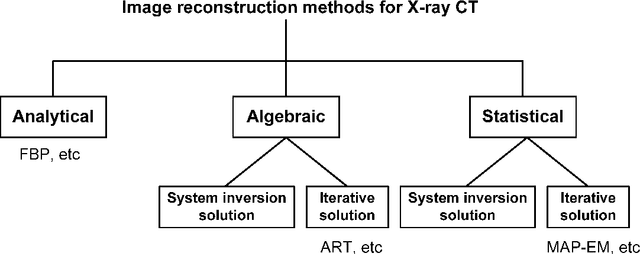

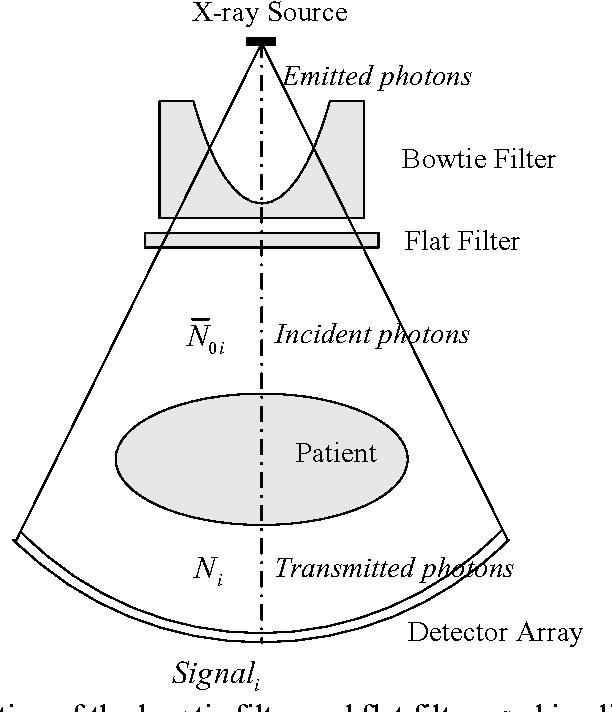
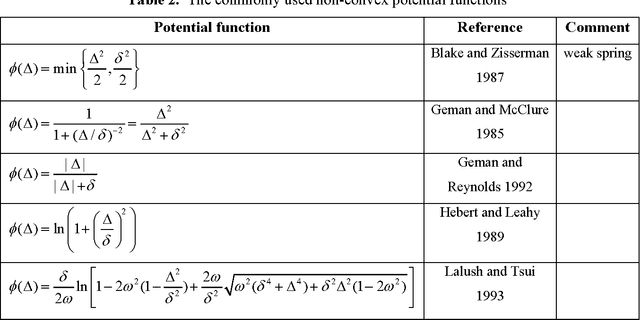
Abstract:Statistical image reconstruction (SIR) methods have shown potential to substantially improve the image quality of low-dose X-ray computed tomography (CT) as compared to the conventional filtered back-projection (FBP) method for various clinical tasks. According to the maximum a posterior (MAP) estimation, the SIR methods can be typically formulated by an objective function consisting of two terms: (1) data-fidelity (or equivalently, data-fitting or data-mismatch) term modeling the statistics of projection measurements, and (2) regularization (or equivalently, prior or penalty) term reflecting prior knowledge or expectation on the characteristics of the image to be reconstructed. Existing SIR methods for low-dose CT can be divided into two groups: (1) those that use calibrated transmitted photon counts (before log-transform) with penalized maximum likelihood (pML) criterion, and (2) those that use calibrated line-integrals (after log-transform) with penalized weighted least-squares (PWLS) criterion. Accurate statistical modeling of the projection measurements is a prerequisite for SIR, while the regularization term in the objective function also plays a critical role for successful image reconstruction. This paper reviews several statistical models on CT projection measurements and various regularization strategies incorporating prior knowledge or expected properties of the image to be reconstructed, which together formulate the objective function of the SIR methods for low-dose X-ray CT.
 Add to Chrome
Add to Chrome Add to Firefox
Add to Firefox Add to Edge
Add to Edge